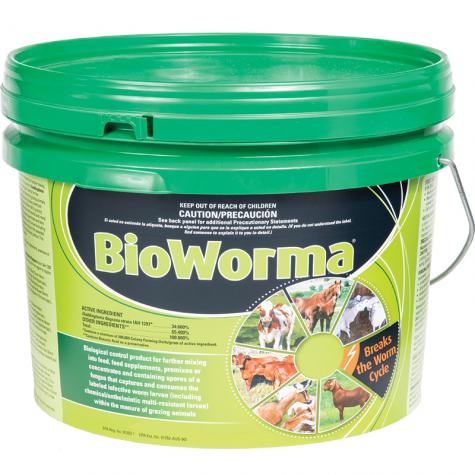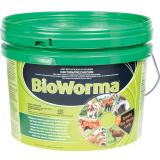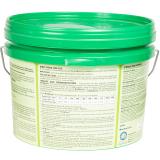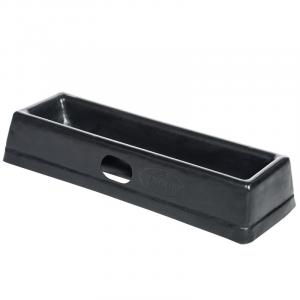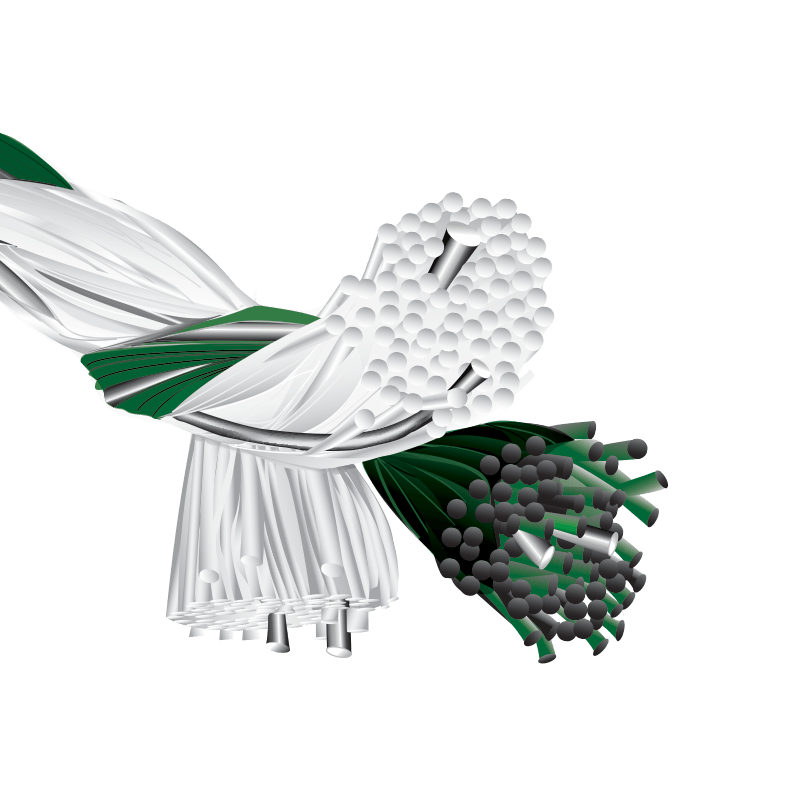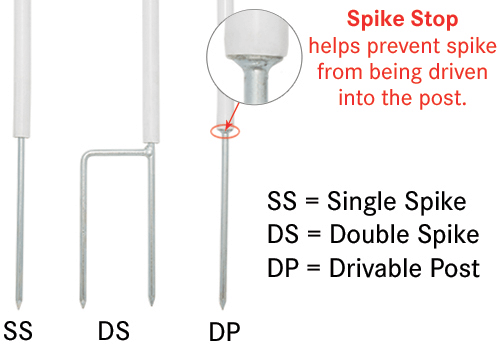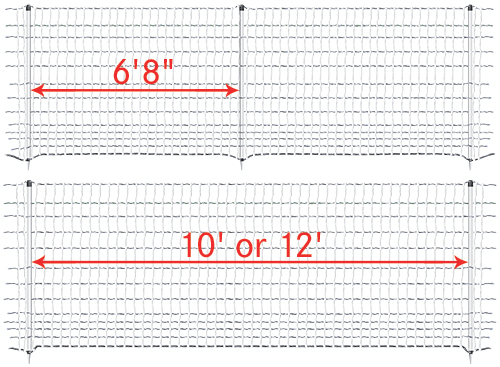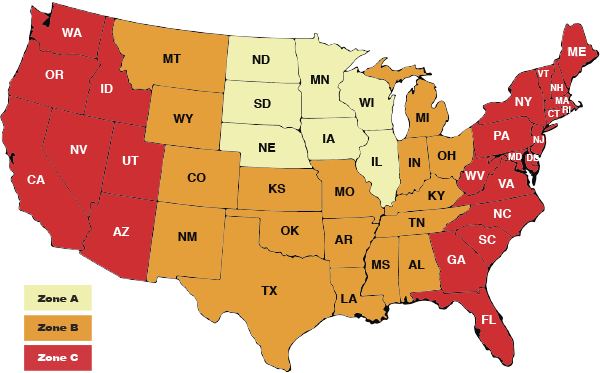BioWorma®
Product Details
A feed additive to control the spread of parasitic larvae in the pasture. BioWorma® is a naturally occurring fungus that captures and consumes infective worm larvae (including chemical and anthelmintic resistant larvae) within the manure of grazing animals. BioWorma® is effective when fed to sheep, goats, cattle, horses and others—including deer, alpacas and zoo animals.
Use by mixing into feed, feed supplements, premixes or concentrates.
Note: BioWorma® consumes larvae from the pasture, reducing the possibility of reinfection. It does not eliminate parasites present in the animal. Animals need to be treated with a dewormer/anthelmintic to remove the internal parasites.
![]() California Residents: Proposition 65 Information
California Residents: Proposition 65 Information
Instructions/Diagrams:
Benefits
BioWorma® contains the natural fungus Duddingtonia flagrans. When fed to grazing animals the thick walled spores pass through the digestive system remaining inert (having no effect within the host animal) and out into the manure. When the infective nematode/roundworm larvae become active within the manure, the fungus sporulates forming a fungal web that captures, paralyses and consumes infective larvae. As a result, the worm cycle is effectively broken.
Duddingtonia flagrans reduces the number of gastrointestinal nematodes (GIN) larvae on pasture, which is significantly greater than a chemical wormer can do within the animal. Overall averages below:
68% – SHEEP | 86% – GOATS | 81% – CATTLE | 84% – HORSES
Common Questions
- If I feed BioWorma® for 3 months will it establish on my farm?
- No. Once the fungus has consumed the larvae in the manure it will die.
- Is BioWorma® affected by seasonal change?
- BioWorma® is recommended for strategic use during periods when weather conditions are conducive to larval development and transmission onto pasture at temperatures above 40°F (5°C).
- Does it affect dung beetles or earthworms?
- There are no negative effects on non-target soil nematodes, earthworms, microarthropods, soil bacteria and fungi. Beneficial insects feeding or breeding on manure (e.g. dung beetles, fly larvae) are not negatively affected.
- Can I feed it to pregnant ewes?
- There are no precautions for feeding to pregnant animals.
- What's the difference between BioWorma® and Livamol® with BioWorma®?
- BioWorma® is a concentrated feed additive that is mixed into the feed (or other supplements). Livamol® with BioWorma® is a feed supplement premixed with BioWorma® and top dressed over the animals' feed.
Specs
Active Ingredient
- Duddingtonia flagrans strain IAH 1297* 34.600%
- Other Ingredients** 65.400%
- Total: 100.00%
(*) Contains a minimum of 500,000 Colony Forming Units/gram of active ingredient. (**) Contains Benzoic Acid as a preservative.
The following is a list of roundworms/nematodes trapped by Duddingtonia flagrans strain IAH 1297 globally and the presence or absence of some of these nematodes may vary from region to region.
- Sheep and Goats
- Barber’s Pole Worm or Wire Worm (Haemonchus spp.), Black Scour Worm or Hair Worm (Trichostrongylus spp.), Brown Stomach Worm (Teladorsagia (Ostertagia) spp.), Nodule Worm (Oesophagostomum spp.), Thin-necked Intestinal Worm (Nematodirus spp.), Hookworm (Bunostomum spp.), Intestinal Worm (Cooperia spp.), Large-mouthed Bowel Worm (Chabertia spp.), Skrjabinema spp., Threadworm (Strongyloides spp.), Whipworm (Trichuris spp.), Gongylonema spp. and Mecistocirrus spp. Note: Bioworma’s copper content is 15.7 ppm. This is a small amount for sheep as they’ll consume only .2 ounces per day and adds only 1 mg of copper to the diet.
- Cattle
- Barber’s Pole Worm or Wire Worm (Haemonchus spp.), Brown Stomach Worm (Teladorsagia (Ostertagia) spp.), Black Scour Worm or Hair Worm (Trichostrongylus spp.), Hookworm (Bunostomum spp.), Intestinal Worm (Cooperia spp.), Thin-necked Intestinal Worm (Nematodirus spp.), Nodule Worm (Oesophagostomum spp.), Threadworm (Strongyloides spp.), Toxocara vitulorum, Whipworm (Trichuris spp.), Gongylonema spp. and Mecistocirrus spp.
- Horses
- Large Strongyles (Large Red Worms), including Strongylus spp., Triodontophorus spp. and Oesophagodontus spp.; Small Strongyles (Small Red Worms or Cyathostomes), including Cyathostomum spp., Cylicocyclus spp. and Cylicostephanus spp.; Stomach Hair Worm (Trichostrongylus axei); Ascarids (Parascaris equorum); Threadworms (Strongyloides westeri) and Pinworms (Oxyuris equi).
- Other Grazing Animals (including Deer, Alpacas and Zoo Animals)
- Barber’s Pole Worm or Wire Worm (Haemonchus spp.), Black Scour Worm or Hair Worm (Trichostrongylus spp.), Brown Stomach Worm (Teladorsagia (Ostertagia) spp.), Nodule Worm (Oesophagostomum spp.), Thinnecked Intestinal Worm (Nematodirus spp.), Hookworm (Bunostomum spp.), Intestinal Worm (Cooperia spp.), Threadworm (Strongyloides spp.), Whipworm (Trichuris spp.), Ascarids or Small Intestinal Roundworms (Ascaris spp.), Threadworms or Pinworms (Strongyloides spp.), Large Strongyles (Strongylus spp.) and Hairworm (Capillaria spp.)
How To Use
Daily Dosage Rates for Grazing Animals
| Bodyweight* | Dose** | Cost Per Animal Per Day*** |
|---|---|---|
| 25 lbs | 0.025 oz | $0.05 |
| 50 lbs | 0.05 oz | $0.10 |
| 100 lbs | 0.1 oz | $0.21 |
| 200 lbs | 0.2 oz | $0.42 |
| 300 lbs | 0.3 oz | $0.63 |
| 400 lbs | 0.4 oz | $0.83 |
| 500 lbs | 0.5 oz | $1.04 |
| 750 lbs | 0.75 oz | $1.56 |
| 1,000 lbs | 1.0 oz | $2.08 |
| 1,200 lbs | 1.2 oz | $2.50 |
(*) Apply according to heaviest animal in the group. (**) Use additional 0.1 oz. for each 100 lbs above 1200 lbs. (***) Costs are provided as an estimate only. Qty. purchased and freight charges may affect final pricing.
USE RESTRICTIONS: Not for use in medicated feed. Not for use in free-choice feeds. Do not feed undiluted. Not for direct consumption. Intended for further mixing into feed, feed supplements, premixes or concentrates.
Tips
- Treat animals with a suitable oral, injectable, or pour-on wormer/anthelmintic to rid the animals of worms, then begin administration of BioWorma®.
- Move the treated animals onto low worm pasture (that is, pasture that has not been grazed by the same animal species for a minimum of 6 weeks).
- The most worm-susceptible are young animals (from 3 months up to 18-24 months of age) and periparturient females (last month of pregnancy and while producing milk) as they are the most likely to have less resistance to worm infestation due to low immunity. Do not underestimate pasture contamination by adult stock, even animals with low fecal egg counts (FECs), considering the volume of fecal material adult stock place on pasture.
- Thoroughly mix the BioWorma® with feed, feed supplements, premixes or concentrates, and commence daily administration of the resultant mixture to minimize pasture infectivity and maintain the low worm status of the animals.
- BioWorma® will begin to work within the first day and may be fed continuously when warm, moist climatic conditions are conducive to parasitic nematode activity.
- BioWorma® is for use during periods when conditions are conducive to larval development and transmission onto pasture at temperatures above 40°F (5°C).
- Use BioWorma® in conjunction with the specified worm management strategy for your area by contacting your Veterinarian, Animal Health Advisor or Government Advisory groups for a strategic Integrated Parasite Management (IPM) plan. It is important to consider the principles of refugia.
- Periodically check the worm burden and monitor the effectiveness of the worm management system. Options include fecal egg counts (FECs), the fecal egg count reduction test (FECRT) and/or identifying worm species by using fecal larval cultures (FLCs). Re-treatment with an effective chemical wormer may be indicated (consult your Veterinarian).
Questions? Ask a sheep expert for advice.
Shipping
Item #780240 is eligible for FREE Ground Delivery within the contiguous USA when ordering $100 or more of qualifying items.
Truckload pricing (10 pails or more) is available by request. Please contact us online or call 800-282-6631 for a quotation.
Estimated Cost for LTL Shipments
| # of Pails | Weight | Shipping Cost | ||
|---|---|---|---|---|
| Zone A | Zone B | Zone C | ||
| 15 lb Pails | ||||
| 10 | 120 lbs | $87 | $112 | $150 |
| 20 | 210 lbs | $174 | $224 | $300 |
Precautions
Can cause serious eye irritation. Wear protective gloves, protective clothing, eye protection and face protection.
-
Treatments
Livamol® with BioWorma®, 30 lb pail
Item #780238 -Effectively controls parasite roundworm larva when fed to grazing animals such as sheep, goats, cattle and others. For mixing or adding to livestock feed.
$149.50 -
Buckets and Troughs
Aluminum TurboScoop, large
Item #938361 -Versatile utility scoop with a front-facing handle. Easy to use and kind to wrists. Strong and rust-proof, ensuring it remains a reliable tool for years.
$24.00 -
PortaTroughs
PortaTrough™ 5
Item #938000 -Portable 5 ft feeder withstands all weather and animal conditions. Stackable for easy movement and storage.
$97.75 -
PortaTroughs
PortaTrough™ 3
Item #938010 -Easy to clean 3 ft livestock feeders used to provide grain, minerals, salt or water. Stackable for easy movement and storage.
$55.75 -
Buckets and Troughs
GoatTuff Feeder
Item #938020 -Durable trough feeder designed specifically with goat behavior in mind. Reduces waste and promotes animal safety.
$39.00 -
Buckets and Troughs
Rubber Pan (without handles), 3 gallon
Item #999610 -Rubber feeding and watering pan for livestock. Flexible and sturdy through decades of use. 3 and 6.5 gallons.
$12.00 -
Books
Managing Pasture Book
Item #981015 -A complete guide on building healthy pasture for grass-based meat and dairy animals.
$30.00 -
Books
Capturing Sunlight Book
Item #986111 -No-nonsense knowledge on the chemistry and physiology of plants, qualities of soil and principles of storing grass hay and silage.
$29.00 -
Books
Pasture Management Guide
Item #984000 -The best modern guide we've seen by far. Highly recommended for all Midwest shepherds who pasture sheep.
$18.00 -
Books
From The Feed Trough
Item #986110 -A collection of articles from livestock nutritionist, Woody Lane. In depth, informative and very helpful knowledge for livestock producers.
$32.00
Write a Review
You must be logged in to leave a review. Please sign in.
Jean-Francois S from Maryland
Bioworma helps keeping pastures free of Haemoncus Tortuous [Barber Pole]. It is far from being the perfect remedy, but it is the best we have at this point. It is a shame that it is so expensive. The product has to be used as part of an overall pasture management, including strong rotational grazing.
Jamie J from Illinois
Since using BioWorma with my alpaca herd I have cut parasites down tremendously. They stay much healthier.
Celestia B from Washington
It works as advertised. I only wish it weren’t perennially back-ordered. The weather in my region is conducive to worms year round. I have a large herd of dairy goats. I use several worming strategies and have drastically reduced the worm load over time. I’m hoping to get enough BioWorma to dose the herd daily year round on my next purchase. It’s worth every penny.
Jon M from Washington
We don’t have a huge worm presence, and maintain a fairly low stocking density, but we do get a bit lazy about timely rotation between paddocks. So a couple of the ewes usually have an elevated fecal count in autumn, and those get a drench just before we reduce our pasture area to winter space. This year we’ve added BioWorma to the morning chaffhaye feeding (about 1000lb total bodyweight, so 1/4c each day) but it’s too soon to see if it’s as effective as we hope. None of the sheep seemed to notice, but they’re all pretty greedy eaters. We rarely see freezing temps, so likely this will be a year-round supplement.
Chelsea L from Alabama
I live in Alabama where parasites can be a huge problem. I am always worried about my goats having too many in their system since they are mostly on pasture, so I regularly do fecals. Since using this product I have seen a reduced number of their fecal egg counts and even with the recent stress of breeding season, their numbers were still down. I wish it was cheaper, but it’s worth the peace of mind for me.


